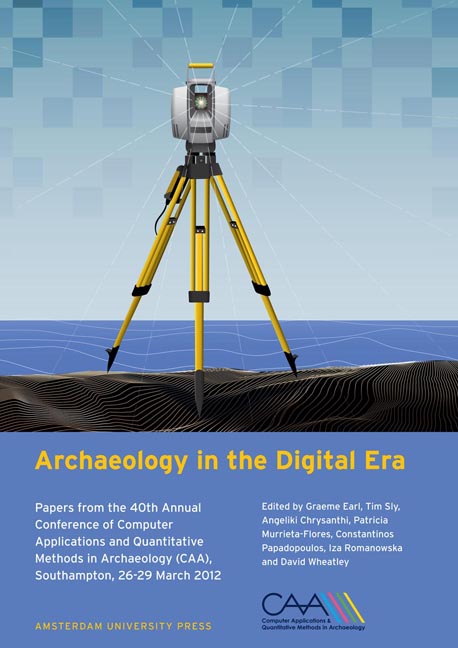 Archaeology in the Digital Era
Archaeology in the Digital Era Geospatial Virtual Heritage: A Gesture-Based 3D GIS to Engage the Public with Ancient Maya Archaeology
Published online by Cambridge University Press: 16 February 2021
Summary
Abstract:
This paper presents our research to develop a gesture-based 3D GIS system to engage the public in cultural heritage. It compares two types of interaction—device-based vs. natural interaction— and summarizes the beta-testing results of a 3D GIS tool for archaeology, called QueryArchgD, in which participants used device-based interaction (i.e. mouse and keyboard). It follows with a description of the gesture-based system—that we developed in response to these beta-tests. The system uses QueryArchgD and Microsoft's Kinect to enable people use body movements (in lieu of keyboard or mouse) to navigate a virtual reality landscape, query 3D objects, and call up photos, videos, and text. The case study is the ancient Maya city of Copan—today an UNESCO World Heritage site in Honduras. The low cost and portable system is ideal for museum exhibitions even in developing countries and can be adapted for archaeological content throughout the world.
Keywords:
3D GIS, Kinect, Virtual Heritage, Public Engagement, Ancient Maya
Introduction
Cultural heritage plays an important role in understanding and shaping our past, present, and future and influences identity, community, and political and social processes. For these reasons, among others, it is important to engage and educate the public about the past. Cultural heritage includes both the tangible (e.g. artefacts, architecture, and landscapes) and intangible (e.g. cosmology, folklore, and oral histories) expressions of human culture (Vecco 2010). There are many ways to engage the public in cultural heritage, including on-site visits to monuments and archaeological sites, videos, documentaries, books/articles, songs, games, and re-enactments as well as websites, blogs, and even virtual worlds. In the last two decades, virtual heritage—-the application of computer visualisation, virtual reality (VR), and information and communication technologies (ICT) to cultural heritage—is increasingly commonplace (Forte and Siliotti 1997).
Virtual heritage ranges from virtual displays at traditional museums to web-based applications (including online museums) to mobile devices (loannides et al. 2010). These different contexts include diverse media such as images, movies, maps, and 3D models and use a variety of visualisation and interaction tools to engage and educate the public (Beusing and Posluschny 2009, Pescarin et al. 2012; Pujol and Lorente 2012; Virtual Museum Transnational Network 2011).
- Type
- Chapter
- Information
- Archaeology in the Digital EraPapers from the 40th Annual Conference of Computer Applications and Quantitative Methods in Archaeology (CAA), Southampton, 26-29 March 2012, pp. 118 - 130Publisher: Amsterdam University PressPrint publication year: 2014


